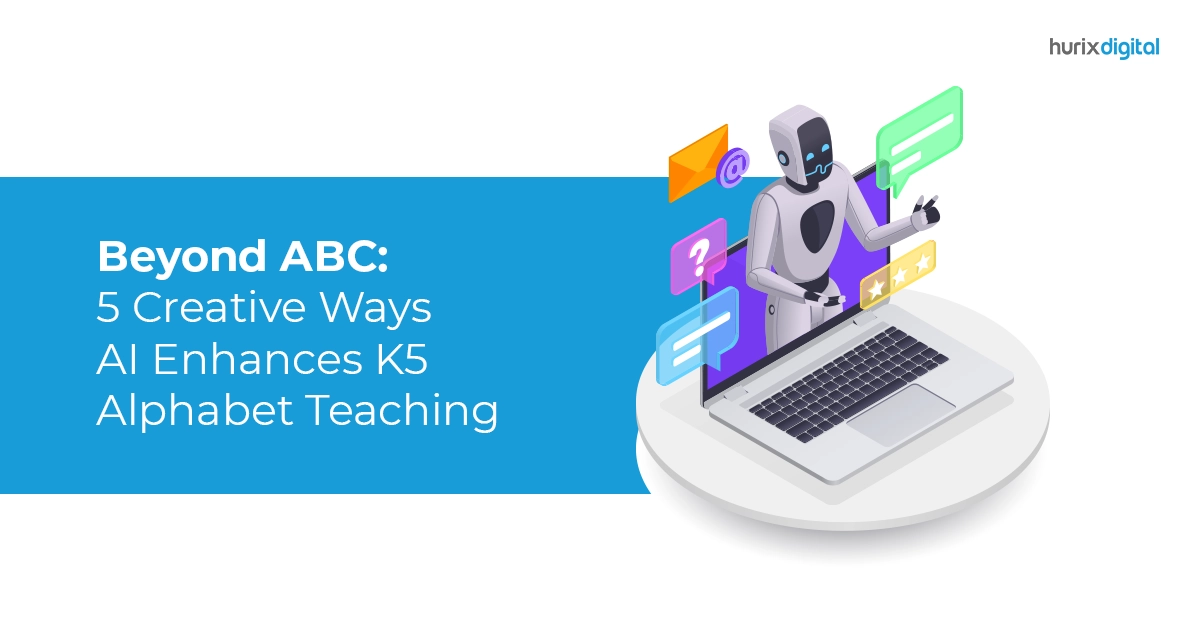Summary
This blog explores five ways to engage students in critical thinking. By using props to make concepts tangible, challenging students to apply their knowledge, and encouraging students to participate in group discussions, educators can effectively foster critical thinking in young children.
Education often focuses on developing tangible skills in students, like problem-solving and reading proficiency. However, within all subjects runs the undercurrent of a more abstract but crucial skill: critical thinking.
Critical thinking involves several cognitive processes:
- Gathering information from diverse sources
- Synthesizing it
- Analyzing and evaluating its relevance
- Considering your own biases
- Applying it in practical scenarios
- Making an informed judgment rather than accepting information without question
Teaching critical thinking skills is challenging, especially to young children in K-5. However, given the overwhelming amount of information we encounter daily and the prevalence of misinformation and social media echo chambers, engaging in critical thinking is increasingly vital.
Moreover, 85% of teachers globally believe their students lack the necessary critical thinking skills upon entering university, underscoring the importance of instilling this skill during early education.
This blog will explore five ways to make critical thinking more engaging for young students.
Table of Contents:
- Critical Thinking- Retaining Attention of K5 Students
- Critical Thinking Is Crucial for K5 Students
- Incorporate Critical Thinking in the Classroom for K5 Students
Critical Thinking- Retaining Attention of K5 Students
One of the biggest challenges of elementary education is maintaining students’ attention. Educators cannot deliver positive learning outcomes if their students do not feel engaged. This is especially true when it comes to teaching critical thinking. Let’s dive in further on how to promote critical thinking in the classroom:
1. Use Gamification to Make Concepts Tangible
Gamification is a valuable tool for teaching children complex concepts by introducing game-like elements such as scenario games, puzzles, and scavenger hunts. This approach encourages critical thinking, allowing students to apply their knowledge within practical game-based scenarios. Plus, with collaborative games like scavenger hunts, students learn to take input from multiple students to conclude.
In essence, gamification empowers educators to effectively assess and enhance students’ problem-solving and collaboration skills, which are integral to critical thinking.
Furthermore, by rewarding how children approach and solve problems, you can actively involve them in the learning process. Using rewards, badges, and leaderboards is an engaging approach, particularly suitable for K5 students. This method effectively fosters curiosity, encourages intrinsic motivation, and cultivates skills like self-regulation and persistence.
2. Provide Interaction Possibilities
Interaction in the form of Q&A sessions is the core foundation of learning in an agile manner. It breeds reasoning and an aptitude for questioning the ‘how’ and ‘why’ of an element, wherever possible.
Asking questions is one of the greatest methods to get kids talking and thinking, so try to ask questions that call for more than a simple yes or no response whenever possible. Make connections between concepts by asking, “What do you think?” or “How do you feel?” and then follow up with open-ended inquiries.
This approach prepares students to actively reflect on scenarios, develop a keen understanding of their environment, and think independently. They can understand concepts better when they’re broken down and simplified with an illustrative format showcased through questions like: ‘Give an example’ or ‘Do you have an alternate opinion?’
3. Enable Kids to Explore Various Points of View
To give students a sense of how to develop a mindset leaning towards critical thinking abilities outside of the classroom, use various instructional techniques, such as discussions, reading aloud, demonstrations, and hands-on activities.
Use songs and jingles in enactments and re-enactments as an example. You can also set up a play with diverse characters, enabling students to relate to characters different from themselves. In this way, you can encourage children to explore diverse views rather than merely telling them how to perceive a subject.
4. Challenge Their Problem-Solving Skills
You can evaluate the sharpness and focus of your students through playing out real-time scenarios in the form of debates or discussions. State a problem or question that aligns with the grade you teach.
- Are teachers or the Internet better for your learning?
- Should students wear school uniforms?
Provide students the chance to decide based on reason instead of emotion or perhaps evaluate how they use their emotions when arguing for or against them. Offer students the option to solve issues on their own, without knowing the solution in advance, by using trial-and-error techniques.
5. Encourage Students to Participate in Group Discussions
When students are allowed to work in groups, they can discuss ideas with other people, form opinions, and learn from each other. This will enable them to use their critical thinking skills to ask the ‘right’ questions and develop creative solutions. Engaging in discussions enhances students’ collaboration skills and ability to express themselves, fostering a deeper understanding of themselves and the topic at hand.
Also Read: The Reach of K-12 Education in the Next 5 Years
Critical Thinking Is Crucial for K5 Students
Critical thinking skills are crucial at any age but become much more important throughout the first few years of school. The ability to assess information, analyze it, and draw connections between ideas is essential for K5 because it aids in developing critical thinking skills.
Beyond the five methods discussed above, here are some additional tips to help young students improve critical thinking:
- Give students access to materials like books, magazines, or comics to encourage them to critically consider the information they consume to help them develop the ability to assess information independently.
- Encourage students to identify inconsistencies in books or tales they read aloud in class by posing questions such as, “What do you notice about this story?” or “Is there anything wrong with this picture?” These questions enable students to think deeply about the information they consume beyond face value.
- Facilitate active and practical learning by connecting coursework to real circumstances. For instance, while teaching maths, ask students how they may use this idea in everyday activities like grocery shopping or family vacations.
Also Read: 5 Latest K-12 Education Trends for 2023
Incorporate Critical Thinking in the Classroom for K5 Students
So, how can we improve critical thinking skills in younger students?
It can be done by integrating the following processes into your K5 curriculum:
- Identify the assumptions behind the ideas students hear or read in class or on television
- Compare two opposing viewpoints on an issue
- Evaluate reasons for why something happened
- Assess the reliability of a source
- Seek answers on their own
Asking questions, drawing conclusions, analyzing data, and addressing issues are the first steps in the process.
Hurix Digital develops innovative digital solutions to help you incorporate the critical thinking skillset in your classroom. Contact us to know more!










